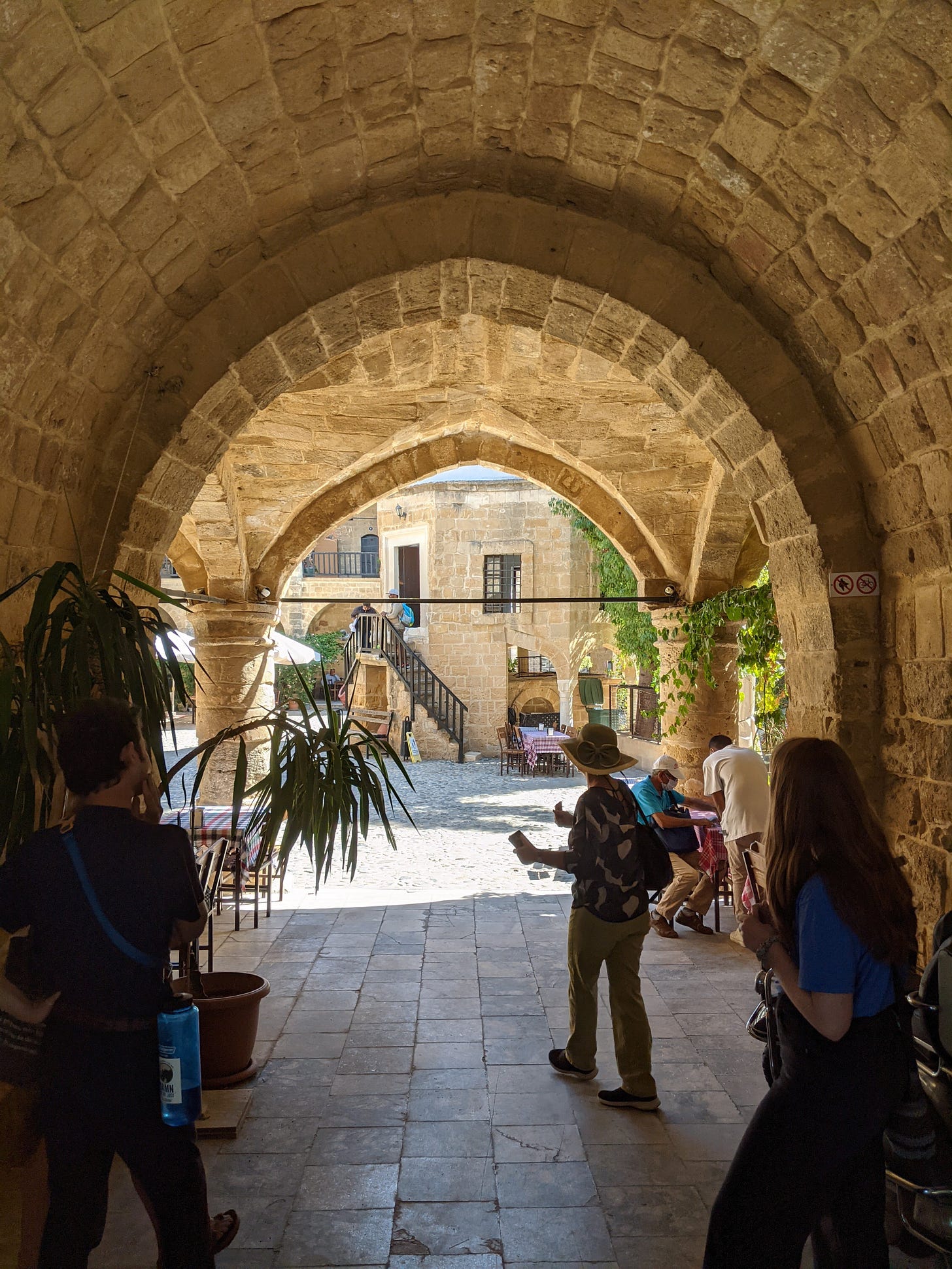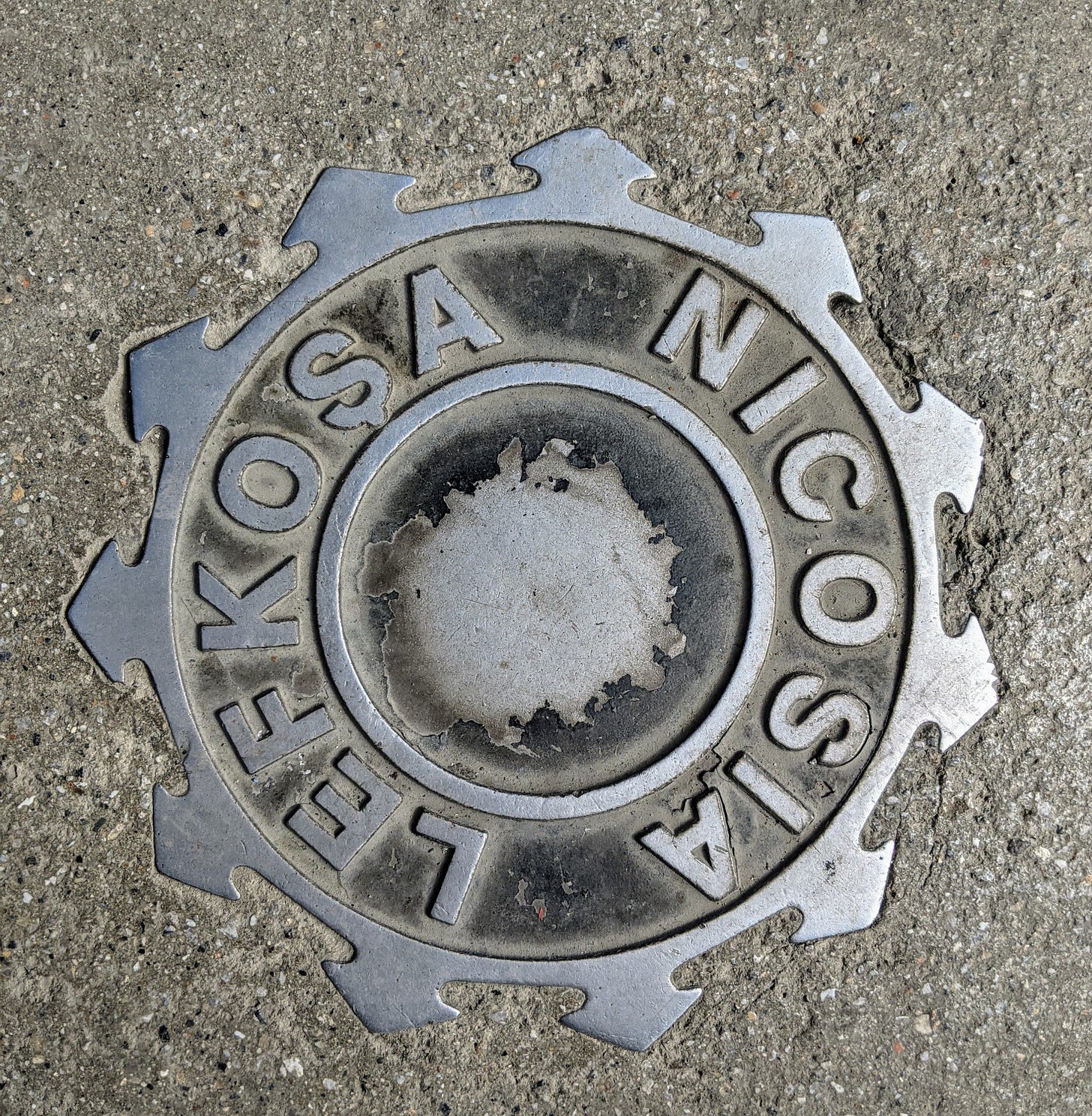
Walk around Nicosia, the capital of the Republic of Cyprus, and it won’t be long before you come across the symbol of a star-shaped wheel, with eleven heart-shaped bastions.
This is a representation of the city’s iconic Venetian walls, built hastily from 1567 to 1570 to hold off the Ottoman invasion. These walls weren’t particularly useful for their intended purpose (the city fell in about two months) but they became an idiom for the city on various maps of the early modern period, and that metaphor carries over today.
The Venetian walls aren’t the only walls in Nicosia, as that star-shaped city has been split in half since 1963, when British forces drew a “Green Line” dividing the North and South. The name is in reference to the green-colored pencil the British Major-General Peter Young used to draw on the map dividing the city, establishing a barbed-wire “buffer zone” in the middle of the city patrolled by UN Peacekeepers, the Cypriot National Guard, and Turkish regulars.
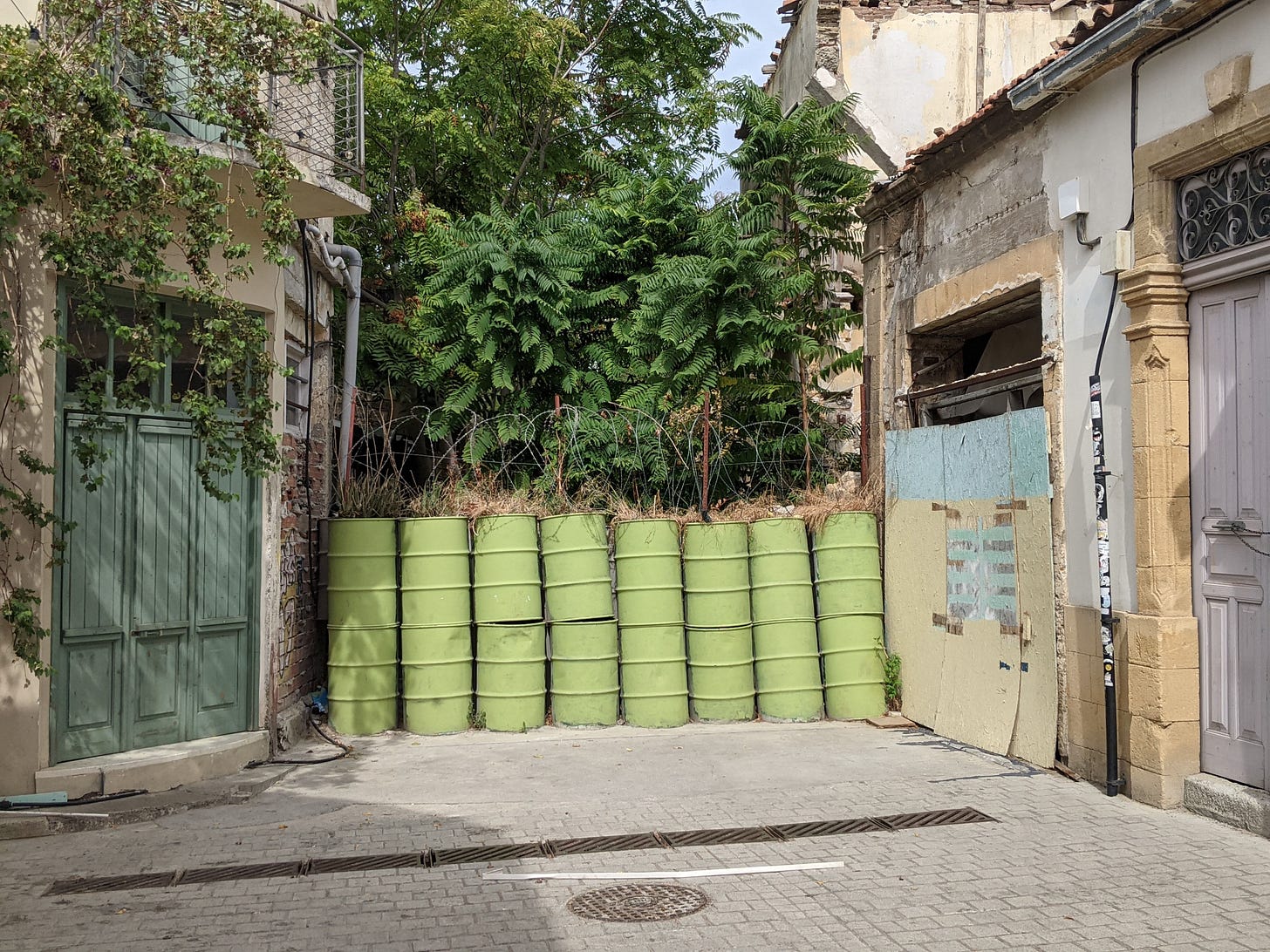
“By day, if one takes the promenade down the busiest shopping street in town, there comes a point where the advertisements, the bars and the inducements simply run out. A tangle of barbed wire, a zariba of cement-filled oil drums, a row of charred and abandoned shops and houses. Only the weeds and nettles justify the designation ‘Green Line.’”
So Christopher Hitchens describes Nicosia, capital of Cyprus since the 10th century, in his 1997 volume, Hostage to History, identifying the city’s modern predicament as the last divided capital in Europe, a topsy-turvy place evocative of divided Berlin and the various Allied occupied zones of Vienna in the iconic postwar noir film, The Third Man.
In this particular soundscape, church bells and loudspeakers blaring the Muslim call to prayer duel for the attention of residents and denizens of the city.
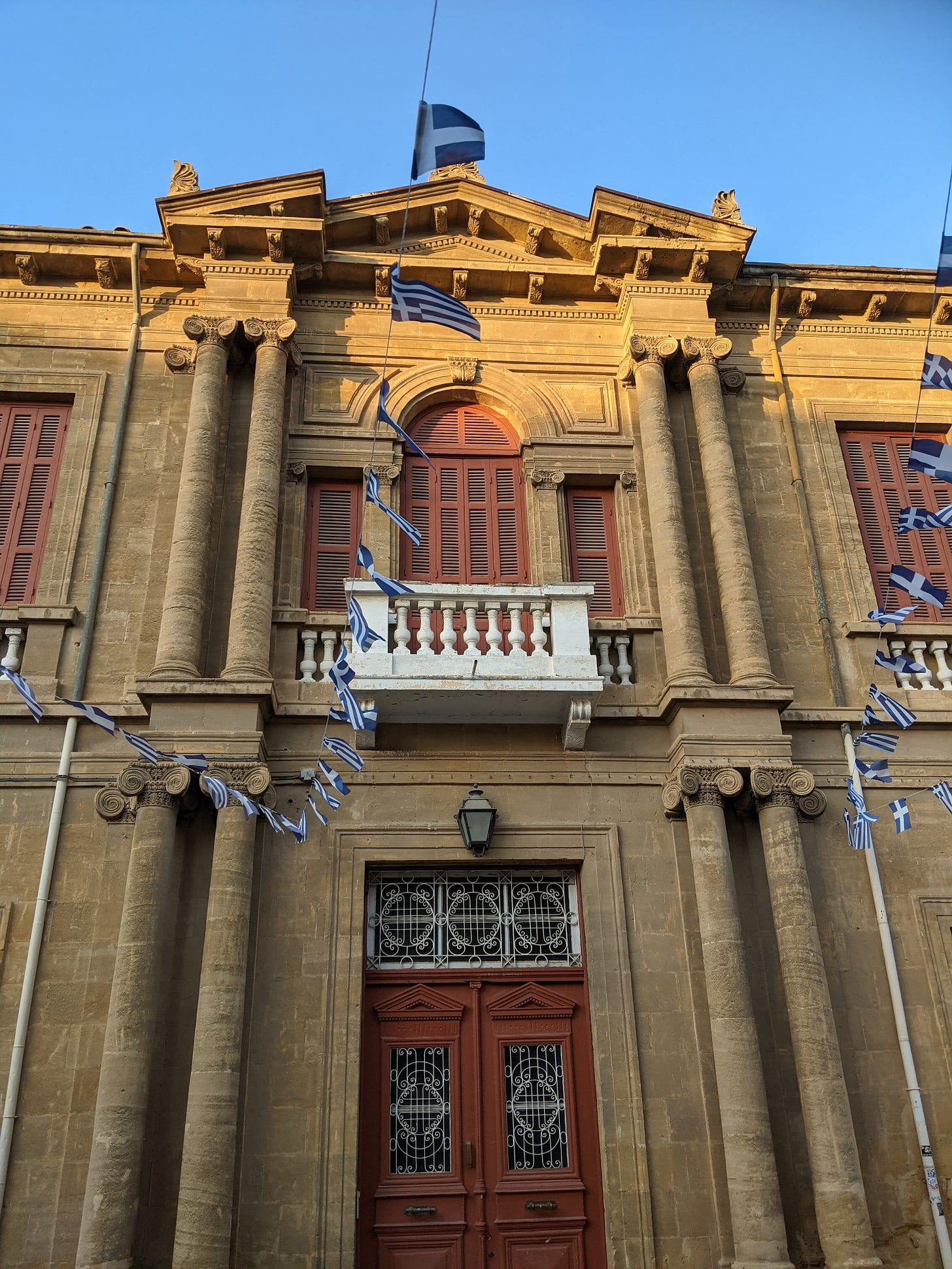
On the Republic of Cyprus’ side of Nicosia, it feels like a European city, with prominent displays of Hellenic architecture. There are the prerequisite signs of globalization (KFC, Starbucks, H&M), trinket sellers, offices, showrooms, cafés, bars, grocery stores—but there are also carpenters, auto shops, and immigrant neighborhoods. Unlike the picturesque old downtown cores like that of Aix-En-Provence or Mykonos, the beautiful streets remain lived in by local residents, immigrant enclaves, and industries—here is one of those beautiful places that is not just a gift shop.
Cross to the Ledra Street checkpoint, and one is confronted with a border crossing in all but name. Passports are checked, and “safepass” Covid-19 vaccine slips must be presented. The Greek Cypriot checkpoint only refers to the other side as “the occupied territory.” You pass through the Buffer Zone, and then, after another passport control, you’re in the North. No passports are stamped, because this country doesn’t “exist”—the so-called Turkish Republic of Northern Cyprus (TRNC) goes unrecognized by all other countries but for Turkey.
Within the walls of Nicosia, Lefkoşa, as it is known in Turkish, possesses some spectacular examples of world heritage. Medieval Ottoman buildings such as Büyük Han dazzle, while modern covered bazaars offer a hodgepodge of trinkets, knock-off Adidas, and groceries. Though espresso is pretty dominant in Southern Nicosia, in Lefkoşa “Cyprus” Coffee (Turkish or Greek coffee) still carries the day, the grounds sticking to your teeth.

Something’s off, though. As you exit the walled city on the Northern side, the redevelopment and gentrification recedes, and what you’re left with are forlorn betting parlors, public art reminiscent of Communist Yugoslav sculpture, vacant lots, and a massive, provocative Turkish flag painted on the mountain. At night, that flag glimmers with a rotating display of flashing lights, a sight that could easily be transposed on a dying Reno casino. Next to that flag is another flag, and a famous slogan of Atatürk, founder of modern Turkey: “Ne mutlu Türküm diyene,” which translates to “how happy is the one who says I am a Turk.”
But the North doesn’t seem like a happy place. It has an air of desperation, its insecurity a side effect of going unrecognized by the international community. At another nearby checkpoint, the Northern passport control has a sign that reads: Turkish Republic of Northern Cyprus FOREVER. Such bravado can only derive from fear.
Because out here, it feels like anything can happen. The air may be the same but sometimes it’s harder to breathe.
In “The Two Nicosias, Part II,” we’ll get into how Nicosia got to this point—and what it might take to come back together.
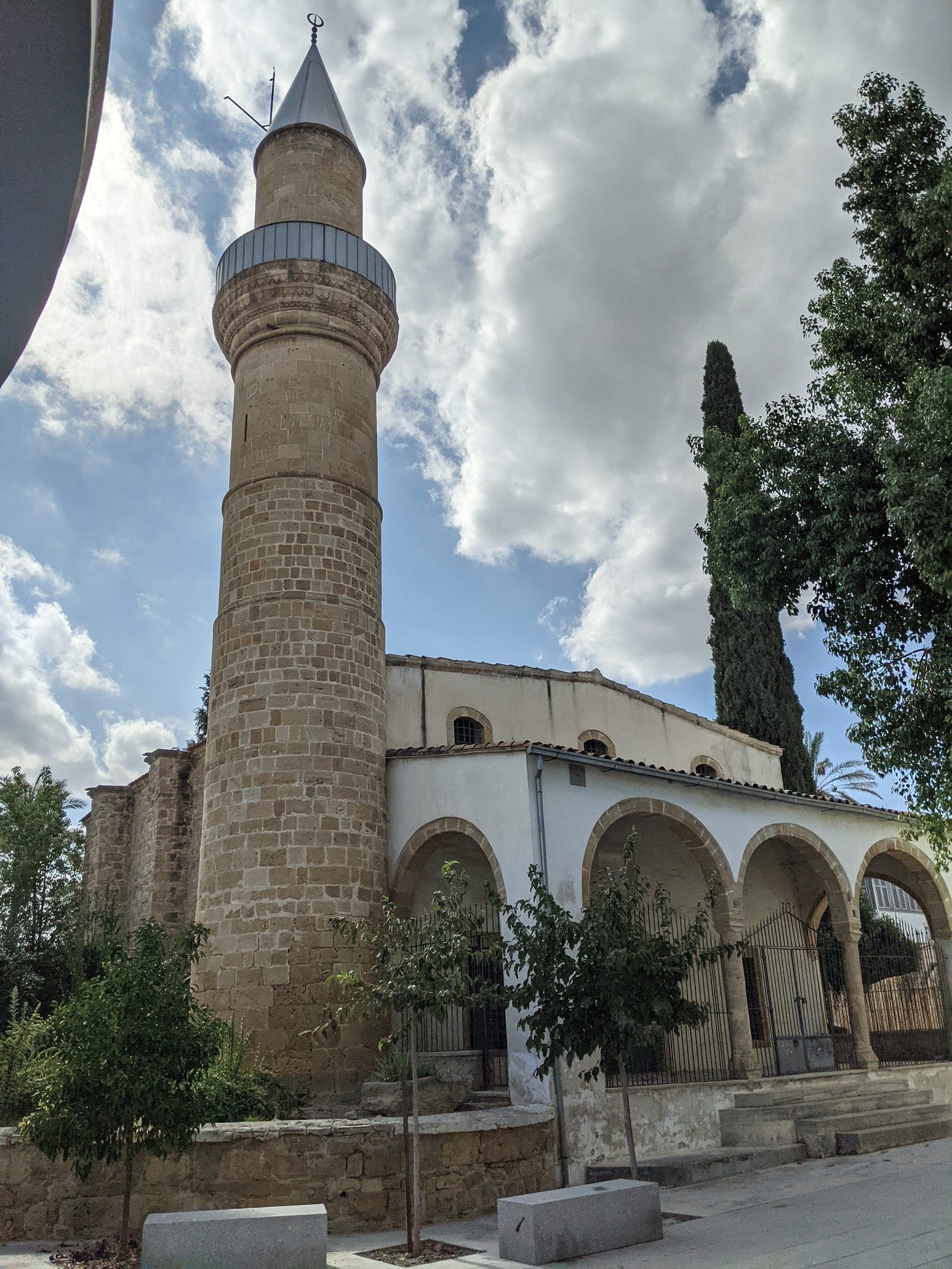
This is the fourth post in The Cyprus Files, a limited-run newsletter series from The Usonian chronicling my Fulbright experiences in Cyprus. You can read all the posts in The Cyprus Files here. Thanks for reading, and don’t forget to subscribe so you don’t miss a (free) dispatch from the island of Aphrodite!



